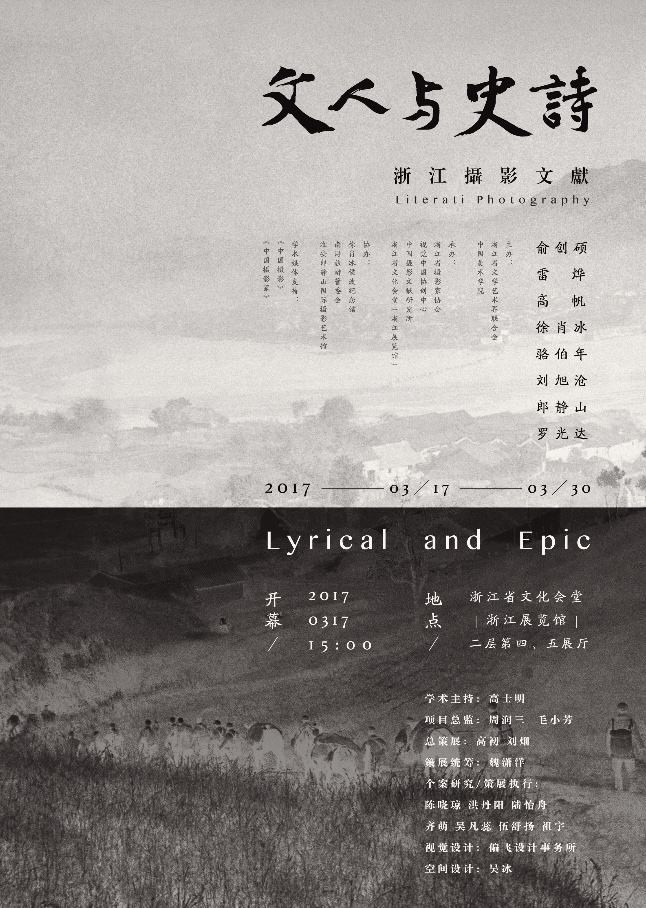2016-2017

The Lyrical and the Epic is a long-term project initiated by the Social Archive of Chinese Photography (SACP). The inaugural exhibition was curated by Gao Chu and Liu Hatan, and ICAST graduates and current students Wei Xiaoyang, Chen Xiaoqiong, Lu Qiazhou, Qi Meng, Wu Fanrui and Wu Shuyang served as case studies and exhibition producers.
The first exhibition, Literati Photography: The Lyrical and the Epic focused on the photographic lives of eight Zhejiang photographers in the 1930s and 40s: Yu Chuangshuo, Gao Fan, Lei Ye, Xu Xiaobing, Luo Bonian, Liu Xucang, Lang Jingshan and Luo Guangda. During these 20 years, owing either to their respective careers and travels, or perhaps simply to the era, they alternately went to battle, marched across China, or continued the bourgeois traditions of the pre-Revolution Republic of China, transforming the huge collisions of Eastern and Western culture, and practicing the artistic exploration of aesthetic and their personal styles. Their individual histories, subjects and styles, photographic groups and artistic stages are all defined by the periods of political history, with some becoming the mainstream, and some the underground. The mainstream and the underground also contain derivatives, evolutions, absorptions, transformations, confrontations, fragmentation and extinctions. The photography of this period is both the summit and nadir of the photography of the Republic of China, and also the prelude and foundation of the photography of the New China period. Through presenting the visual literature of this period, the exhibition not only discussed the subjects and concepts, subject matter and language, media and scene, and New Chinese photography, but also discussed the careers and circumstances of individuals who witnessed the transformation of art across two momentous periods, as well as the evolving mechanisms of art as a social driving force.
The exhibition was structured like a film or TV series: eight characters and their storylines intertwined to form a web, originating in Zhejiang and branching out into a complex roadmap. The plotlines extended independently, crossing paths unpredictably; seemingly separate narratives gradually woven together by the invisible hand of history.The exhibition included grand, epic perspectives and narrative arcs, as well as brief and captivating interludes, dramatic moments of collision, and a shared temporal signpost—their respective ‘1949,’ a point of new departure.